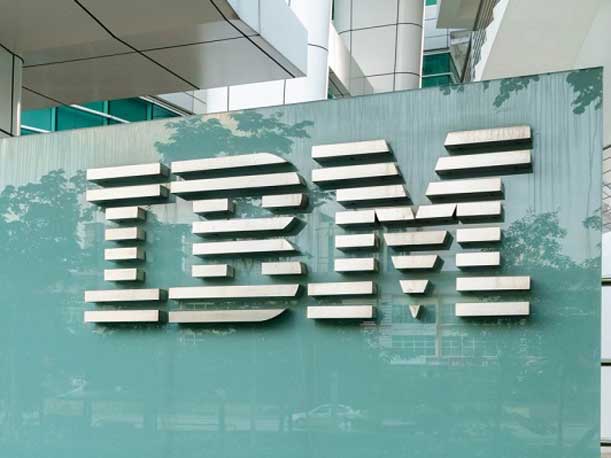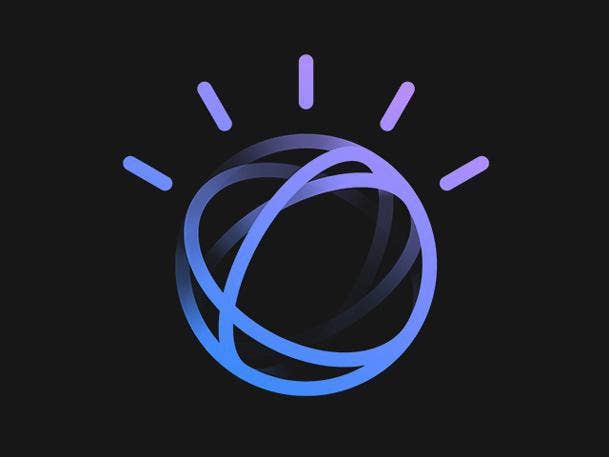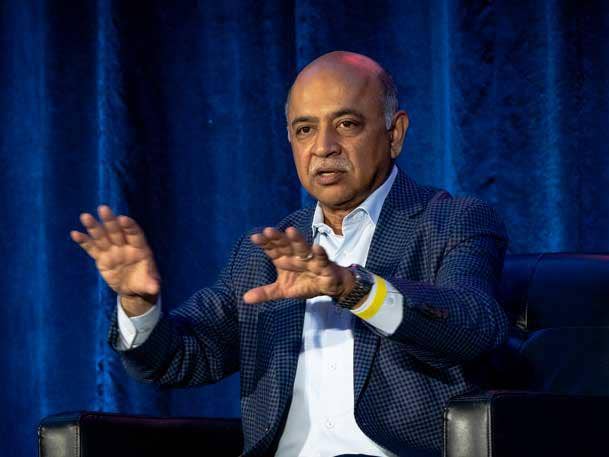IBM Earnings: 5 Things To Know
‘Over the last several quarters, it has become clear that technology is playing a significant role in boosting productivity in the face of inflation, demographic shifts, supply chain challenges and sustainability requirements,’ IBM CEO Arvind Krishna says on the company’s fourth-quarter earnings call.

Layoffs, more acquisitions on the horizon, bets on artificial intelligence and pushback on new-business slowdown statements from Microsoft and F5 were among the highlights of IBM’s latest quarterly earnings call.
On Thursday, the Armonk, N.Y.-based tech giant reported earnings for the fourth quarter of its fiscal year, which ended Dec. 31.
“Over the last several quarters, it has become clear that technology is playing a significant role in boosting productivity in the face of inflation, demographic shifts, supply chain challenges and sustainability requirements,” IBM CEO Arvind Krishna said on the call.
[RELATED: IBM CEO Arvind Krishna: AI, Hybrid Cloud ‘Work Together To Drive Business Outcomes’]
“We entered 2022 a more focused company and took steps to reinforce our position. We strengthened our consulting expertise and expanded strategic partnerships. To bolster our software portfolio, we invested in hybrid cloud and AI capabilities. We also delivered significant innovations in infrastructure with our z16 and Power platforms. All of this was brought to market with a more tactical and experiential sales approach.”
IBM’s stock traded at $134.15 a share Thursday afternoon, down about 3 percent from market close Wednesday.
Here’s what you need to know.

3,900 Layoffs, Acquisitions Expected
IBM became one of the latest tech giants to announce layoffs this week.
After the earnings call, an IBM spokesperson confirmed to CRN that the vendor plans to cut between 1 percent and 1.5 percent of its global workforce.
Multiple media reports put the number of laid off workers at 3,900—1.5 percent of a global workforce of 260,000. The latest public employee disclosure from IBM showed about 282,000 workers at the end of 2021. Assuming the head count is closer to that total, the layoffs would number between 2,820 and 4,230 employees.
The layoffs are related to the Kyndryl spinoff and health-care divestiture and not based on 2022 performance or 2023 expectations, an IBM spokesperson told CRN in an email.
Still, IBM hinted at more acquisitions to come for the company. IBM ended the quarter with $8.8 billion of cash on hand. The company has $12.9 billion in debt.
Krishna told analysts on the call that customers want more automation to help optimize software and hardware, they want more tools to use data where it lives and not have to move it, and they want more cybersecurity and threat management.
“Consequently, we’ve got to remain pretty focused on these areas,” he said. “You should expect both organic and inorganic investment.”

IBM Bets On AI
IBM’s leadership expressed confidence in their bets on artificial intelligence, automation and hybrid cloud paying off in 2023.
Krishna called hybrid cloud and AI “the two most transformative technologies for business today” and said that IBM is well positioned to take advantage of continued investment in these areas by customers.
AI should contribute $16 trillion to the global economy by 2030, he said. And hybrid cloud is more valuable than a single public cloud because users can access multiple clouds and work on-premises and at the edge.
“These technologies work together to drive business outcomes,” Krishna said. “Hybrid cloud is where the world is going. Containers are the preferred destination for applications. Hybrid cloud offers more value than relying on a singular public cloud. It enables organizations to drive business value across multiple clouds, on-premises or at the edge. This includes scale, security, ease of use, flexibility of deployment, seamless experiences and faster innovation cycles.”
When asked about how IBM will be a leader in the AI market with Micorosft and OpenAI capturing headlines for the ChatGPT text-generating program, Krishna said that the company will focus on enterprise and government automation.
“If you can automate the drive-thru and order taking for quick-serve restaurants, that’s an example of what can happen,” he said. “If we can get deflection rates of 40, 50, 60 percent at everyone’s call centers, that’s a massive operational efficiency for all of our clients. If we can help retirees get their pension through interacting with a Watson-powered AI chatbot, that is an enterprise use case where all of these technologies come into play. By the way, all of my three examples are real clients, where we are resulting in anywhere from hundreds to thousands of people, the efficiency, for each of these clients.”
For customers that are experiencing some headwinds in 2023, most believe “they are going to emerge stronger” and seek automation services, Krishna said.
“In order to emerge stronger, that means they’re all deploying technology to help offset wage inflation, cyber issues, supply chain challenges and all the demographic shifts—meaning there is just fewer skilled people to hire,” he said.
IBM itself has used AI to improve its processes, including promotions, people movement, quote-to-cash and answering customer questions.
AI operations (AIOps) is another area where IBM expects to dominate, Krishna said.
“Our AIOps portfolio there really advantages us,” Krishna said. “And I believe we are in a unique position because we help our clients in an environment across multiple public clouds and on-premises and with their private clouds in that space.”

IBM CEO Arvind Krishna
Pushback On New-Business Slowdown Talk
When asked by an analyst about Microsoft and F5 reporting on new business slowing compared with renewals, Krishna said IBM hasn’t experienced that, explaining that from IBM’s perspective, “new application” work includes expanding an existing deployment and “new development” includes new applications on a cloud, refactoring and integration with other applications.
“For us, I don’t really see that,” Krishna said. “I see that our clients do want to do new development.”
On Microsoft’s own earnings call this week, Chairman and CEO Satya Nadella described a temporary slowdown that resulted from customers ramping up digital tool adoption at the height of the pandemic and now wanting to optimize their current spend with Microsoft.
Microsoft CFO Amy Hood blamed the “slowdown in growth of new business” for having an effect on revenue from various businesses within the company, including revenue from stand-alone Office 365, Enterprise Mobility and Security (EMS) and Windows commercial products sold outside the Microsoft 365 suite.
Krishna said IBM’s lack of consumer business has kept it immune from that sort of buyer behavior.
“The reason that we are remaining in this optimistic frame of mind—we have no consumer business,” he said. “I agree that our clients may have a consumer business, but we don’t have that directly. And so I think consequently, we might be seeing a little bit different subset of the economy than those who might have a large direct exposure to a consumer business.”

$16.7 Billion Fourth-Quarter Revenue
IBM reported $16.7 billion in revenue during the quarter, up 6 percent ignoring foreign exchange.
IBM’s quarterly revenue beat expectations, according to analyst reports after the call.
IBM’s software segment by expectations by $300 million, according to a Thursday report by Morgan Stanley.
Morgan Stanley commended IBM for improving its partner ecosystem, with SAP, Microsoft and Amazon Web Services contributing more than $1 billion of consulting revenue for the year.
A Thursday report from Credit Suisse said that IBM’s expectation for 2023 revenue growth in the mid-single digits is consistent with what its leaders have said before, alleviating concerns about one-off benefits from z16 upgrades and worries about the economy interfering with growth in the consulting business.
Analysts on the call appeared to take issue with the amount of free cash flow IBM was generating. Credit Suisse expects the company to decrease the $35 billion flow it predicted for 2024 by about 10 percent due to the strong U.S. dollar and exiting a profitable business in Russia due to the war in Ukraine, according to the firm’s report.
Credit Suisse was bullish on the company in its report due to favorable demand, the cost savings from the layoffs and about half of IBM’s annual revenue becoming recurring.
“Net-net, we think IBM remains well positioned to leverage key IT trends including AI, digital transformation and hybrid cloud,” according to the report. “Management expects favorable trends to continue into 2023 as enterprises deploy additional technology to help offset macroeconomic pressure.”

Growth In Red Hat, Consulting
IBM’s software revenue brought in $7.3 billion during the quarter, up 8 percent year over year ignoring foreign exchange.
Within this segment, revenue for hybrid platform and solutions grew 10 percent year over year. Hybrid platform and solutions has annual recurring revenue of $13.3 billion, IBM CFO Jim Kavanaugh said.
Hybrid cloud revenue for all of software is more than $9.3 billion over the last year, up 16 percent, Kavanaugh said.
Revenue from Red Hat, which is part of the hybrid platform, grew 15 percent. IBM did not break out exact revenue figures. But Kavanaugh told analysts that Red Hat’s OpenShift hybrid cloud platform has $1 billion in annual recurring revenue.
OpenShift and Red Hat’s Ansible subsidiary grew double digits, he said.
Automation grew 9 percent. Data and AI grew 8 percent, and security grew 10 percent.
Revenue for IBM’s transaction processing business—still part of the software segment but separate from hybrid—was up 3 percent year over year ignoring foreign exchange. Counting foreign exchange, it was down 3 percent year over year.
IBM Consulting brought in $4.8 billion during the quarter, up 9 percent year over year ignoring foreign exchange. Counting foreign exchange, it only grew by a half percent. IBM’s software and consulting businesses make up about 70 percent of the vendor’s revenue.
Over the last 12 months, IBM Consulting brought in $9 billion in hybrid cloud revenue, Kavanaugh said. That is an increase of 23 percent year over year.
Within consulting, business transformation grew 7 percent year over year ignoring foreign exchange. With foreign exchange, it actually decreased by 1 percent. IBM did not break out revenue figures of the business lines within its consulting segment.
Technology consulting grew 10 percent year over year ignoring foreign exchange and 1 percent counting foreign exchange.
And application operations grew 12 percent year over year ignoring foreign exchange and 2 percent counting foreign exchange.
IBM’s infrastructure segment saw $4.5 billion in revenue, year-over-year growth of 7 percent ignoring foreign exchange.
Hybrid infrastructure grew 11 percent ignoring foreign exchange and 6 percent counting it. Within hybrid infrastructure, IBM z Systems grew 21 percent ignoring foreign exchange and distributed infrastructure grew 5 percent.
Infrastructure support was flat year over year ignoring foreign exchange. Counting foreign exchange, it fell 8 percent year over year.
For the full year, IBM saw $60.5 billion in revenue, up 12 percent year over year ignoring foreign exchange. Hybrid cloud brought in $22.4 billion in revenue, up 17 percent year over year.